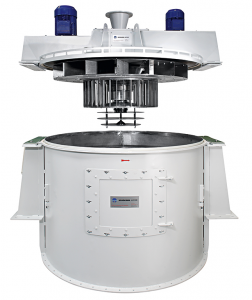 Dry-powder classification types in food processing, according to Hosokawa Micron
Dry-powder classification types in food processing, according to Hosokawa Micron
February 5, 2018 REDWIRE is news you can use from leading suppliers. Powered by FRASERS.
Posted by Firing Industries Ltd
The business objective of FIRING INDUSTRIES LTD. is to consult with clients to select and supply technically complex PRO... Read more
Subscribe
Free REDWIRE e-newsletter

Hosokawa Micron dry-powder classifiers are available from Firing Industries.
One of the many top equipment manufacturers whose products are available in Canada from Firing Industries is Hosokawa Micron, which produces many state-of-the-art powder-processing technologies for the food and beverage industry, among others. From milling machines to granulators, mixers, and roller compactors, Hosokawa Micron has a range of food-processing solutions.
Hosokawa manufactures a line of dry-powder classification and separation systems, which are another common requirement in this sector.
Two methods of classification
Hosokawa Micron identifies two main categories of dry-powder classification and provides equipment solutions for each:
- Particle-size classification
- Particle-density classification
Particle-size classification is a method of separating dry powder into at least two groups with maximum and/or minimum particle sizes. To differentiate between different products, manufacturers often use “cut points”. As an example, if a company that produces cornstarch requires a maximum particle size of 75 microns, it may set a D97 of 75 microns as the cut point – meaning that 97 per cent of the cornstarch particles will measure no more than 75 microns in diameter post-classification.
Some applications may require a secondary target as well, typically set as a D50 cut point; for example, a D50 of 30 microns means that half of the particles will be less than 30 microns after classification. This increases accuracy.
The most common type of device for size classification is the vibratory screener, which sieves powder through a vibrating screen or perforated steel sheet. For powders with difficult flow properties, a manufacturer will need a rotary screener.
Classification by particle density creates powder particles with uniform size, but various masses; hence a different screen for this application is required.
Common devices used for particle-density classification:
- Cyclones. These classifiers use vortex airflow to separate powder into fine and coarse fractions.
- Elutriation classifiers. These are ideal for particle sizes from 0.3 to ten millimetres.
- Dynamic air classifiers. Combines elutriation, drag force, and centrifugal force for fraction separation.
To learn more, contact Firing Industries’ application-sales engineers at ddubuc@firing.com or (877) 688-0974.
Share
Posted by Firing Industries Ltd
The business objective of FIRING INDUSTRIES LTD. is to consult with clients to select and supply technically complex PRO... Read more
